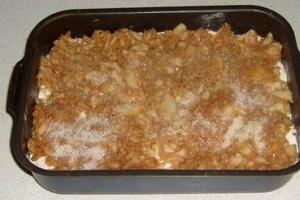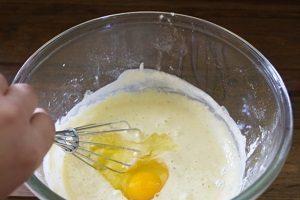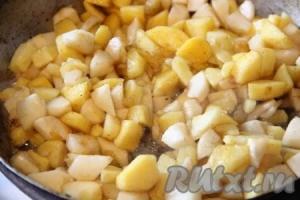The abundance of alcoholic beverages on the shelves of our stores, however, does not affect the reduction in the cost of these products. And a simple esthete cannot afford store products.
A simple design of a mini-factory for the production of homemade moonshine (alcohol) is proposed. Any person with basic knowledge of physics and chemistry can assemble the proposed design.
Structurally, the device is made in a three-liter glass jar. The technology of the process consists in the condensation of alcohol vapors on the cooler, and the subsequent collection of the resulting condensate into a container.
At the initial stage, we manufacture the parts of the apparatus. The cooler is a 0.5 l metal container filled to the brim with small metal parts (nuts, bolts, washers, nails, etc.). In the upper part of the container we pierce two holes for fixing the rope. The best material is copper. After filling the can with metal, the free volume of the container is filled with water. The container is placed in the freezer for cooling.

At the second stage, we make a watering can and a container for collecting the finished product. Any PET bottle with a capacity of 0.5 liters will serve as a material for the watering can. We cut the bottle at a distance of 60 mm from the neck. Collection container ethyl alcohol we make from another aluminum can from beer or carbonated drinks 0.33l. The height of the required container from the bottom to the top edge is 70 mm. The capacity of the manufactured container will be about 50 ml. In the upper part of the container, we pierce oppositely two holes for attaching the rope.

The assembly of the structure consists in sequentially stringing a container, a watering can, a cooler and a can lid onto a rope.

To get alcohol in a jar, you need to fill in raw materials. It can be mash, wine, etc.

Pour 200-250 ml of raw materials into a three-liter jar. Remove the cooler from the refrigerator and assemble the structure. Lower the assembled structure into the jar. Close the jar tightly with a plastic lid.


In the summer, when steam heating is not working, dip the jar in a container of hot water. Keep the water temperature within 50°C. The process will also last about 10 hours.
The main advantage: this is a practically free device for making moonshine (alcohol) in winter conditions. We freeze the cooler jar on the street (it’s very good for someone who has a balcony or loggia), and we put the evaporator itself on a steam heating battery. If you have your own raw materials, then everything is practically free, and there is no smell during distillation.
One such apparatus gives approximately 50 ml in 10-12 hours. alcohol, if there are two, then 100 ml.
Quick navigation through the article
Anyone can make a moonshine with their own hands. The heart of any distiller is the alembic. In fact, it is a container where the mash boils, evaporating that very valuable substance. First, decide on the volumes: how much finished product you need and how often you will drive.
Also, the choice of capacity depends on the conditions of production: if you have your own garage or cottage, you can also swing at a 40-liter can. This is very convenient: I expelled 10-20 liters every three months and it’s enough for myself and guests, and the product goes well as a presentation.
For home production in an apartment, a smaller capacity is needed - up to 10 liters will be enough. This is the optimal cube size for the conditions of small kitchens located in cramped high-rise buildings. Now you know what to do before alcohol mashine, you need to understand all aspects: how the moonshine will work, where, what is your experience and all other points. And then we turn to the choice of materials and components.
container material:
- Aluminum: good quality material, able to work for a long time without significant damage and deformation, almost eternal material for a cube.
- Enamelled packaging is quite common, but does not like aggressive environments very much, it withstands an average of 3-5 years, then repair issues begin: from the action of temperature, shocks, the enamel first comes off, and then rust corrodes the metal. It is repaired with wooden “chopics” (insert from wood chips) for another 2-3 years, and then thrown away. This container wears out especially quickly when it is used together for “winning” mash and further distillation.
- Stainless steel. This is, of course, aerobatics. But a completely stainless alloy is expensive. Often, under the guise of "stainless steel", they sell galvanized steel, nickel-plated steel, and anything else. When assembling the structure, you will need to break this coating (drill a hole, weld something, etc.). And in places where the coating is broken, rust will form over time, which will destroy the container. This option is enough for different periods: from 2 years (if just a stainless steel alloy) to eternal use with the right to inherit to grandchildren (very expensive).
- Glass cauldron. This is a very rare "laboratory option" for domestic use. Beautiful, aesthetic, but impractical. For moonshine aesthetes.
Type of container:
- The aluminum milk can is an excellent, time-tested container for alembic. Your task: to replace rubber gaskets with silicone ones, for food products. So it will be safer for health, moonshine will not smell like rubber. This is the most popular cube when they mean moonshine, which will be made by hand.
- Pressure cookers are a favorite type of container for a cube for urban conditions of small kitchens. You do not need to change anything, just add a fitting for the coil. Minus - low productivity, the design is inefficient for full-fledged production.
- Enameled pan: if there is no other container, then you can use it. You will have to deal with the tightness of the lid thoroughly. The best reliable option: make a gasket, hinges with holes are installed on the lid and walls of the pan, through which the entire structure is connected with studs with wing nuts. Cheap, cheerful, reliable. All hinge attachment points are also sealed with food grade silicone.
- A full-fledged cube made of real stainless steel: you can buy it ready-made (but only in trusted places), you can find friends and acquaintances in the bins who not only come from the USSR, but also lived in it most of their lives. The volume should be 30 liters at a minimum, otherwise there is no point in talking about mass production to meet the needs of one cell of society.
Important note! When choosing a container, pay attention to the neck: at least a hand should fit into it so that you can wash the device after use. .
A few words about the theory of moonshine
The myth that moonshine is the lot of only the Slavs, to put it mildly, is disingenuous. The production of strong alcohol by distillation is part of the culinary and household culture of many peoples living in different parts of the world. Suffice it to name such drinks as:
- whiskey;
- Calvados;
- brandy;
- gin;
- chacha;
- tequila;
- cognac.
to make sure that our domestic moonshine is not alone in the list of products obtained by distillation.
Homemade moonshine will not differ in any way from factory-made drinks, if you follow the recipe for making mash and strictly follow the distillation technology. We will talk about the raw materials for sourdough mash another time, and in this material we will talk about the distillation process and, based on this, we will tell you whether it is possible to make a simple moonshine still at home, and what is required for this.
How does distillation work?
distillation process
This chemical process is extremely simple technologically, it is easy to reproduce it at home. The bottom line is that substances dissolved in water (mash) have different vaporization temperatures and are released from the solution sequentially - first lighter, then heavier, and only at 100C does the water itself begin to actively evaporate.
If the solution is not brought to a boil, and the vapors entering a separate container are cooled, then individual substances separated from others that differ in boiling point will condense in it. The process was invented a long time ago, it is difficult to say who invented it first. Superiority is attributed to Arab scientists, but this is a rather controversial statement.
Temperature regime of distillation of alcohol (moonshine)
Braga, in its essence, is an aqueous solution of alcohol, resulting from the activity of special fungi - yeast, well known to everyone who has seen bread being baked at least once in their life. Yeast in the process of life processes the sugar in the wort into ethyl alcohol and related substances - acetaldehyde, methyl alcohol, various kinds of esters.
When the concentration of ethyl alcohol in the mash is 13-14% of its volume, the fermentation process stops naturally, and it becomes completely ready for distillation - the extraction of alcohol, which is about 1.4 liters in 10 liters of sourdough.
The difficulty lies in the fact that when the mash is heated, along with alcohol, its companions - aldehydes and ethers, which are completely undesirable in the composition of moonshine, evaporate. They begin to evaporate at a temperature of 65C and accompany alcohol to T = 73C. After reaching this point up to T=85C, only alcohol evaporates. At higher temperatures, heavier components appear in the moonshine, popularly called "fusel oils". They spoil both the color and the taste of the drink, so you should get rid of them as radically as possible.
Serpentine transport artery system

We go further in the constituent parts: we have a coil coming out of the distillation cube to the refrigerator. It is in the coil that the magic of condensation takes place: alcohol vapors turn into liquid. But not immediately: before that, they must get into the refrigerator.
The coil is made of stainless or copper tube. Here the choice of material is up to you: copper gives off heat better, but is more expensive. There are also fears that copper, as a very active element, reacts with alcohols, after which aldehydes and other harmful substances are formed. But these concentrations are extremely small: to get aldehyde poisoning, you need to drink at least 100 liters of moonshine. (But you will die before the concentration of aldehydes from the ingested alcohol becomes lethal). Copper is ideal as the most technologically advanced material.
Food grade stainless steel is also expensive, but still more affordable and safer. True, there is another problem with it: the quality can “limp” even if you purchased the handset at a high price.
Under the selected tubes, select the required size fittings. Often this is a ¾ pipe, so be guided by it.
Last: it is forbidden to use non-metallic hoses under the alcohol line. Any PVC, rubber tubes react very actively with alcohol, break down and pollute moonshine.
moonshine refrigerator
In order to properly manufacture a refrigerator, several parameters should be taken into account:
- Material. The first requirement that applies to the coil material is that it does not react with alcohol. In addition, it must withstand temperatures up to 100 degrees without problems and have high thermal conductivity. Copper meets all these qualities better than others. Stainless steel is also suitable, but its thermal conductivity is much lower. Copper makes more sense because it is easy to bend into a spiral. In many countries, copper is considered the best material for making distillers. The disadvantage of copper is that it requires constant cleaning.
- Dimensions and thickness of the tube. The longer the tube, the stronger the moonshine is cooled on the way to the receiving tank. But there is a side effect: the colder the liquid, the slower it moves. Again, with a large internal diameter, alcohol cools faster, but moves more slowly, a small one is difficult to process. Thus, the following parameters will be optimal: length - 1.5–2 meters, inner diameter - 8–12 mm, thickness - 0.9–1.1 mm. In some moonshine stills, the coil has a horizontal arrangement - this does not make sense at all. Vertical is the best option.
Refrigerator specs:
- Substance: air, water or ice is usually used. It is preferable to use water as the most practical medium.
- Heat dissipation scheme: open and closed. In open circuits, water circulates. This structure of the apparatus is the most advantageous.
- Direction of water supply. It is correct to supply water from below, and take it from above. Then the water will move towards the steam, and the cooling efficiency will be as high as possible.
- To make a refrigerator, you will need a tube for the coil and a pipe with a diameter of 75–80 mm. First of all, sand is poured into the tube for the coil so that the metal does not flatten during curling. The ends must be hammered in so that the sand does not spill out; a nut can be immediately welded onto one of them.
The design of the moonshine still is not particularly complicated, for this reason some craftsmen make devices literally “on their knees”. And manufacturers of devices come up with more and more new designs that should provide a person with high-quality alcohol. Moonshine stills have been known to mankind for a long time, some of them were familiar to the Egyptians as early as the 3rd century. In Russia, such devices appeared a little later - in the XVI-XVII centuries.
Classic variant
What exactly is included in the design of the apparatus and what are certain parts of it responsible for?
The design principle of the classic model:
- A moonshine of the correct design must certainly have a distillation cube, a container for storing mash. The cube should be made of durable material, preferably stainless steel, but aluminum cans can be used as a distillation cube. An aluminum milk storage can is best used for this purpose as it has an airtight lid. If the cube is made of stainless steel, then it tolerates contact with aggressive substances, alcohols and fusel oils well. Aluminum is not as stable as stainless steel, so over the years, harmful substances that are formed during the oxidation of aluminum can get into the wash.
- The thermometer helps to maintain the temperature regime: the fact is that during the boiling process, fusel oils and water evaporate at one temperature, and alcohol at another. For this reason, it is worth monitoring the indicators and avoiding overheating, since it is dangerous for moonshine and can affect its quality.
- The device is also equipped with a coil - it acts as a connecting element. It is through the coil that alcohol-containing vapors pass, which arise during the heating or boiling of the mash. Vapors enter the sukhoparnik from the coil and are converted into a ready-to-use product.
- The role of the steamer is to clean alcohol-containing vapors from fusel oils and other harmful substances. A sukhoparnik is often called a deflector or a sump. Passing through the device, harmful substances settle in the steamer. But this part of the apparatus can not only purify alcohol from impurities, it is often used to add a certain flavor to the drink. Orange or lemon peels are placed in the steamer to give the moonshine additional piquancy, a pleasant taste and smell.
- A refrigerator is a zone in which condensate is produced, the vapors turn into a solution of alcohol. If we are talking about an apparatus that has a connection with running water, then cooling occurs due to its circulation, and if there is no access to water, then a container filled with cool liquid is used.
The design of the moonshine still
But it is possible to produce good alcohol not only with the help of a moonshine still; often, validation columns are used to obtain high-quality alcohol.
Ratification column and its device
Many people think that the ratification column is the apparatus for distilling moonshine, but in reality it is not. Ratification column is a device that has a peculiar structure and differs from a device for making moonshine from mash in that it allows you to get high-quality alcohol with a strength of up to 90 degrees.
In the production of tinctures, liqueurs and other strong drinks, the validation column is indispensable, since only this device can be used in the production of such drinks.
To understand the principle of operation of the device, it is worth considering what the ratification column consists of and what are the features of its design.
The device has:
- A container that heats up during operation of the device.
- Distiller with nozzles and cooling device.
- And also in the design there is a column.
Today, such devices are used not only for the production of alcohol. The validation column has found application in pharmacology, the oil industry and other industries.
The principle of operation of the column is as follows:
- The container containing the mash or solution is gradually heated, and the liquid is brought to a boil. In the process of boiling, a copious separation of steam occurs.
- The steam that appeared during the boiling process gradually rises as a result of an increase in temperature, the steam goes through the column. It "gains strength" due to nozzles that increase heat transfer.
- The vapor reaches the cooling device, and during distillation, the vapor mixture is converted into alcohol. The liquid returns back, it again flows down the column, nozzles are involved in this process.
- As it descends the column, the liquid meets the vapor and passes through the distillation a second time. Due to the repeated distillation process and contact with vapors, the quality of the main product, the strength of the drink increases. This ultimately allows you to get alcohol with a strength of up to 90 degrees.
The design features of the ratification column ensure its high performance. Naturally, this device cannot be compared with a high-power moonshine still. But it is worth noting that, given the ability of the column to produce high-quality alcohol, it is not much inferior in terms of characteristics to the apparatus for home brewing.
However, any device has its pros and cons, but for those who like to produce alcoholic beverages at home, a validation column or a moonshine still are essential devices.
Naturally, the devices are quite expensive, the price of a good apparatus for the production of strong drinks can reach 20-30 thousand rubles. But some people have successfully solved this problem and made their own moonshine from improvised means. What is the working principle of these devices?
Production of moonshine stills
It is not easy to make a moonshine with your own hands, but do not despair, the devices of some devices are so primitive that even a beginner can assemble them with their own hands without certain skills.
Everyone knows that most often devices are made of stainless steel, because it is durable and resistant to acids, alcohols and solvents.
A home-made installation for the production of moonshine at home can have the following varieties:
- You can make an apparatus from a can, which is used to store and transport milk. Instead of a can, you can take a flask or any other container. The can will play the role of a distillation cube, it is equipped with a flow coil or a refrigerator, which is basically the same thing. The refrigerator is made of copper tube. To improve product quality, it is worth attaching a dry steamer to the design.
- The second type of device can also be assembled from a can for storing milk, it is equipped with a powerful refrigerator of five tubes, which increase the reliability and efficiency of the device. In order to get the highest quality alcohol, a steamer is attached to the apparatus.
- For experienced engineers, a device made entirely of stainless steel is suitable. Its advantage is its compactness and the possibility of complete disassembly. The design is very interesting, it is full of unique engineering solutions and ideas. In addition, the device will help expel high-quality alcohol due to the fact that it is equipped with a double steamer.
- You can make an apparatus for distilling strong drinks from any pot that is in the house. The saucepan is supplemented with a tube that performs the function of a refrigerator, and a steamer, in which harmful substances settle, fuselage.
- In 2–2.5 hours, you can assemble a moonshine still from a glass jar and a coil. If you want to enhance the quality of products, then you will have to attach a dry steamer to the device. Despite this simplicity of design, the device will help produce alcohol of good quality. But, of course, its performance is low.
- If you combine a glass jar and a computer cooler, you can make a device for distilling moonshine. An attempt to abandon water cooling leads to the fact that it is replaced with a small fan. And the bank will act as a distillation cube. Such a device is simple in design and is assembled in just a few hours.
- But this is not the easiest device that was created by craftsmen. If you take a bucket, pour mash into it, cover it with a bag, make a small recess in it and fill it with ice water, you can get an apparatus for making alcohol-containing drinks. Such a device will help distill alcohol from mash, but the quality of the drink obtained in this way leaves much to be desired. Instead of a bag with a notch, you can use a bowl of cold water that will float on the surface of the bucket and cool the mash. But there must certainly be a container above the mash, in which alcohol vapors will condense, turning into the cherished moonshine.
The desire to create an apparatus for the production of moonshine does not always end in success, although the design of the device is simple. But it has certain features, for this reason there is a risk of spending money on raw materials, time, and getting nothing as a result.
For those who are not good at designing devices for turning mash into alcohol, special kits can be used. They contain all the details that are necessary to assemble the device and another instruction - it will help you understand the design features and do everything right.
Today in stores you can easily find devices that are equipped with all the necessary details. Such kits are cheaper than the assembled apparatus.
If there is a desire to create a device for the production of alcohol with your own hands, then the process should be approached with all responsibility. You should not save on source codes and you need to think through all the design features in advance, make drawings, or at least find samples on the Internet. Only by thinking through all the features of the device to the smallest detail, you can not only make the device with your own hands, but also get the pleasure of collecting the device and distilling alcohol. And also later enjoy the result of your work!
Moonshine- it's a wonderful world. One has only to try a drink prepared by one's own hands once - and you will understand that store-bought drinks do not cause almost any emotions. But, as in any case, without some knowledge in the area of \u200b\u200ba lump, even far from the first pancake can come out.
Beginners who are just starting to take the first step in self-cooking alcohol, ask a thousand and one questions:
- alcohol mashine?
- What ?
- Why in moonshine?
- How to make with your own hands?
- How to do at home?
- What should be?
What's better - purchased or homemade? Which device will work smoothly for decades, and which one will require vigilant attention and permanent maintenance?
Device, types and rating of the best
We have prepared for you a number of articles, after reading which, you will become a real ace. Everything related to the device of moonshine stills, a description of physical and chemical processes, technologies and, of course, detailed ones.
Try to start small - by reading an article about. The simple and intelligible language used by our authors is aimed at ensuring that all the nuances of home brewing are easily understood by people who are far from the profession of a technologist. Following advice and guidance in this section, in a few days you will understand all the important nuances of production.
Also, this section will be useful to relatives of people who are passionate about moonshine. We will help you choose the right one gift moonshine that will be appreciated by your loved one.
And, believe me, the most difficult - take the first step. But we have done everything to make this step a little easier for you.
A distiller in moonshine is needed to purify the liquid from harmful impurities. Each moonshiner can make such a device with his own hands. Making a distiller is not difficult, but it will take some tools, items and a little time. But the output will be a high-quality, purified product.
A moonshine still is used to distill liquids in order to obtain a strong alcoholic drink. As a rule, it consists of the following parts:
- Distillation cube. This is a tank where mash is poured and it is heated in it. For it, you can use any container that is hermetically sealed and is not afraid of high temperatures and pressure. A can, a pressure cooker, a saucepan are perfect.
- Capacitor. Various tubes for gas condensation are used here.
- Containers for the finished product. Usually moonshiners use glass jars for the final liquid. But you can take other containers, the main thing is to be able to monitor the level.
Types of distillers
Distillers are of different types:
- Industrial. In industry, special distillation columns are used to produce pure alcohol.
- Household. The devices have a less complex design, but with multi-stage distillation, high-quality moonshine is obtained.
- Homemade designs. They are more economical, and with a properly built process, the product is no worse than the factory one. At the same time, the moonshiner knows what elements he used for him.
The principle of operation of distillers is the same. But the dimensions, materials and the design itself have significant differences.
In addition, moonshine stills are:
- Flowing. Such structures are connected to the water supply.
- Non-flowing. They are filled with distilled liquid and do not require connection to the water supply.
Some distillers are equipped with dry steamers, dephlegmators, thermometers, which allows you to more clearly control the distillation process.
DIY distiller for moonshine
There are a lot of different moonshine stills from the store, but if the moonshiner makes the design himself, he knows exactly what parts are used, how strong and reliable they are.
It is not difficult to make a distiller with your own hands. First, select a container for distillation. It must be completely sealed. Many people use large milk cans. They are equipped with the necessary lid, which is easy to close and open. The neck of the can is wide, there are handles for carrying.
An enamel pot with a lid will also work. It withstands high temperatures. The capacity differs in displacement, so you can expel as much moonshine as you want. Make a hole in the lid of the dish to allow steam to escape.

Often moonshiners use a stainless steel pressure cooker for the distillation cube. It has a convenient cover, safety valves.
Choose a capacity based on your needs and capabilities. For a small amount of moonshine, a pressure cooker or dishes with a small displacement are suitable. In order to expel a lot of moonshine, use a can or large-capacity pans.
A coil is attached to the cube. Copper tubes are suitable, they have good thermal conductivity and are less oxidized. Glass tubes are fragile and difficult to manufacture. You can use an aluminum tube, but it oxidizes over time.
Prepare a container for the finished product. It is more convenient to use glass jars, they show how pure the product is, and you can observe the level.
After the necessary parts are prepared, we proceed to assemble the distiller:
- Remove the rubber bands from the cube. For safety, the lid is attached with reinforced tape, silicone sealant or dough (flour and water). Make sure everything is dry and tight.
- Make a hole in the lid of the distillation vessel and insert the adapter there. For this, a plumbing pipe of a suitable diameter, a copper pipe or a wooden cylinder is suitable. Screw a capacitor on it.
- To connect the coil with water, rubber or are used. Check tightness! With the help of a hose, water is supplied, steam is removed and the finished product is output. Silicone hoses are of better quality, resistant to high temperatures, fungus, durable, elastic.
Our distiller is ready, you can start brewing moonshine.
Non-traditional distillers for moonshine
Some moonshiners use non-traditional moonshine parts. Distillers are made from an aquarium, old samovars, metal pipes. Condensers from refrigerators are used to cool the coil. But we must remember about sealing, thermal conductivity, high pressure and temperature.
The distiller is easy and inexpensive to make. In this case, experienced moonshiners will check its reliability, strength and adjust the quality of the product.







